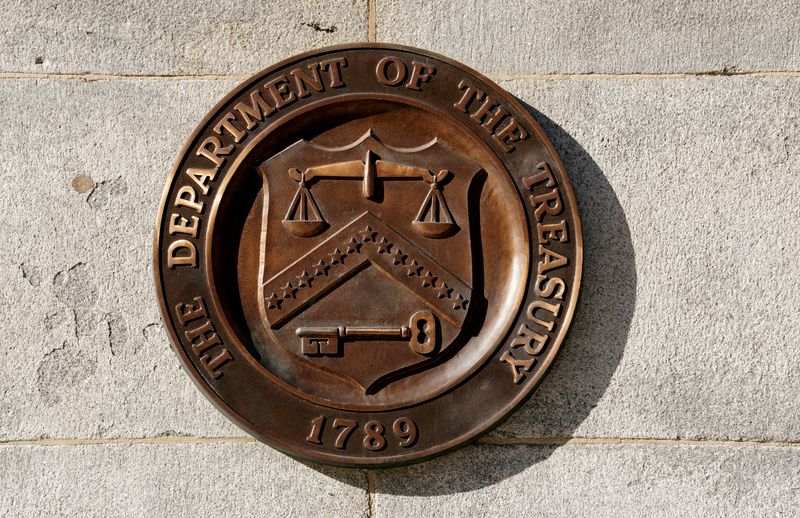By David Lawder
WASHINGTON (Reuters) -The Congressional Budget Office said on Wednesday that U.S. deficits and debt will grow considerably over the next 30 years as interest costs mount, but the outlook had improved from forecasts made last June due to spending limits passed by Congress and stronger projected economic growth.
The CBO's latest long-term budget projections based on current laws show federal deficits rising to 8.5% of gross domestic product in fiscal 2054 from 5.5% in fiscal 2024. The CBO in June projected the fiscal 2053 deficit at 10.1% of GDP.
The projections also show U.S. public debt will climb to 166% of GDP in 2054 from 99% in 2024, but this is down considerably from the June projection of 2053 debt at 181% of GDP.
The results were largely in line with CBO's Feb. 7 forecast of a slightly smaller fiscal 2024 deficit, but the improved outlook did not sway budget hawks in Washington who said it was still unsustainable.
"There is no way to look at these eye-popping numbers without realizing we need to make a change," said Maya MacGuineas, president of the Committee for a Responsible Federal Budget, a fiscal watchdog group.
"And yet we have lawmakers promising what they won't do: I won't raise taxes, I won't fix Social Security, I won't pay for all the things I do want to do. And so we continue on this dangerous path," MacGuineas added.
President Joe Biden's proposed fiscal 2025 budget would raise taxes by nearly $5 trillion over the next decade on wealthy Americans and corporations, but would also increase spending on social priorities such as child care, for a net 10-year deficit reduction of about $3 trillion.
However, the CBO's projections assume no changes to current tax and spending laws for the next 30 years, and include the effects of individual tax rates reverting to higher levels at the end of 2025 as tax cuts passed by Republicans in 2017 expire.
Biden's expected Republican opponent, former President Donald Trump, has said he wants to preserve those tax cuts that he signed into law - a move that would add to deficits unless savings are found elsewhere.
SPENDING CAPS, IMMIGRATION
The slower pace in the CBO's 30-year debt and deficit growth projections partly reflects Congress' passing of two measures limiting the spending increase on discretionary programs, including defense and government agency budgets.
Moreover, the CBO estimated higher economic growth, particularly in the first decade of the forecast period, fueled by stronger net immigration.
The CBO now projects 2.1% real GDP growth in the 2024-2033 period, compared to 1.8% in the June forecasts.
"That increase reflects faster projected growth in the potential labor force that is largely attributable to significant upward revisions to the agency's projections of net immigration over the next decade, particularly through 2027," the CBO said.
Although it projected that the labor force participation rate will fall, it estimated that the prime working age population aged 25-54 will be about 3% higher in 2053 than in the June projections.
Over the 2034-2053 period, CBO projected that U.S. real potential growth will average 1.6% compared to 1.5% in the prior forecasts, reflecting greater capital accumulation.
But deficit headwinds are expected from rising interest costs due to higher rates and a larger debt pile.
The CBO forecast net interest costs will reach 6.3% of GDP in fiscal 2054, more than double the 3.1% estimate for 2024. At that rate, in 30 years, interest costs would exceed Social Security outlays of 5.9% of GDP and discretionary spending of 4.9%, including defense.
